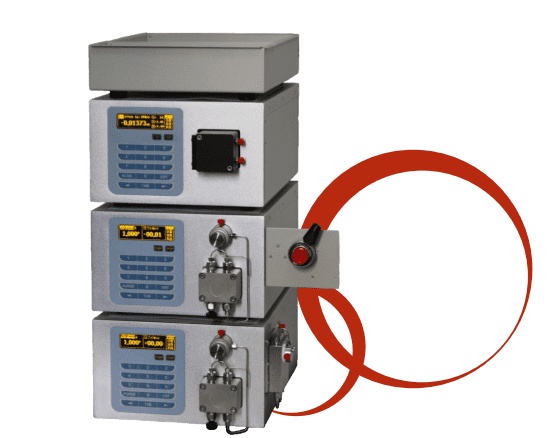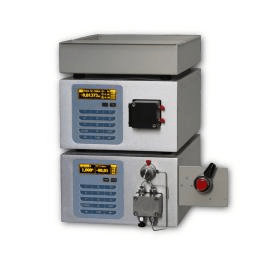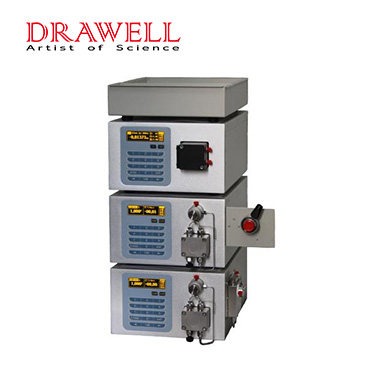High-performance liquid Chromatography (HPLC) is an efficient and rapid analytical separation technique and an important means of modern separation testing. High performance liquid chromatography has a wide range of applications and a wide range of applicability to samples. It is not limited by the volatility and thermal stability of the analytical object. Almost all compounds including high boiling point, polar, ionic compounds, and macro-molecular substances can be analyzed and determined by high performance liquid chromatography. Thus, it can make up for the lack of gas chromatography. This article will introduce the features and FAQs of high performance liquid chromatography.

Features of High Performance Liquid Chromatography
High performance liquid chromatography has the characteristics of “three highs, one wide and one fast“:
- High pressure
The mobile phase is liquid. When it flows through the chromatographic column, the resistance it receives is relatively large. To pass through the chromatographic column quickly, high pressure must be applied to the carrier liquid.
- High efficiency
HPLC chromatography is high separation efficiency. Stationary and mobile phases can be selected for optimal separation, It can achieve many times higher than industrial distillation columns and gas chromatography separation efficiency.
- High sensitivity
The UV detector can reach 0.01ng, and the injection volume is in the order of μL.
- Wide range of applications
More than 70% of organic compounds can be analyzed by high performance liquid chromatography, especially the separation and analysis of compounds with a high boiling point, macro-molecules, strong polarity, and poor thermal stability. These are the advantages of HPLC chromatography.
- Fast analysis speed and fast carrier liquid flow rate
It is much faster than classical liquid chromatography, usually analyzing a sample in 15 to 30 minutes. Some samples can even be completed within 5 minutes, generally less than 1 hour.
In addition, high-performance liquid chromatography has the advantages of repeated use of the chromatographic column, no damage to the sample, and easy recovery. The disadvantage of high performance liquid chromatography is the “extra-column effect”. If there is a change in the flow pattern of the mobile phase in any dead space other than the column (injector, column connector, connecting tube, detection cell, etc.) from the injection to the detector, any diffusion and retention can lead to significant peak broadening and reduced column efficiency. HPLC detectors are less sensitive than gas chromatography.

Frequently Asked Questions about High Performance Liquid Chromatography
Here are 5 common problems with HPLC machines.

- Eddy diffusion
The mobile phase hits the larger solid particles, creating vortex-like flowing water that hits a stone. If the column packing is uneven, and some parts are loose or have fine grooves, the speed of the mobile phase is fast. Some parts are agglomerated or packed tightly, and the flow is slow. Therefore, the particles of the solid phase carrier should be small and uniform, and the packing of the column should be tight and uniform so that the eddy current diffusion is small and the column efficiency is high.
- Molecular diffusion
Molecular diffusion is the movement of material molecules from a high-concentration area to a low-concentration area, also known as longitudinal molecular diffusion. To reduce molecular diffusion, small and uniform solid-phase particles are used to pack the column. At the same time during operation, if the flow rate is too slow and the separated substances stay for a long time, the diffusion will be serious.
- Mass transfer
The substances to be separated should be equilibrated in the mobile and stationary phases so that a narrower zone can be formed. In liquid chromatography, it takes time for solute molecules to be partitioned between two liquid phases, or to be adsorbed and desorbed on a solid phase. When the flow rate is fast, the transfer speed is slow, and it moves forward before reaching the equilibrium dynamic phase. The non-equilibrium movement of these substances widens the zone.
- Flow rate of moving phase
When the flow rate is too low, molecular diffusion is severe, especially in gas chromatography. If the theoretical plate height is plotted against the flow rate, the theoretical plate height decreases rapidly with the increase in the flow rate. When the flow rate reaches the lowest value, the mass transfer plays a major role and the theoretical plate height increases again. In high performance liquid chromatography, a slightly faster flow rate has little effect. But in gel filtration chromatography, because the substance has to penetrate the gel, the mass transfer has a large impact, and the flow rate will reduce the column efficiency.
- The particle size of the stationary phase
The smaller the phasing particles, the higher the column efficiency, the greater the resistance to the flow of the mobile phase, and the need to increase the pressure can make it flow.

